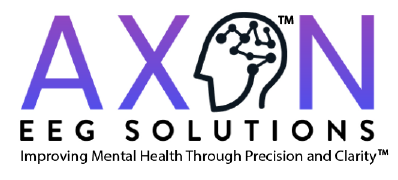Mental health providers often face obstacles with outdated tools and assessments. Axon EEG Solutions takes the guesswork out of treatment by providing cutting-edge Neuro Performance Reports™. With our insights, you can provide personalized treatment plans that enhance patient outcomes and job satisfaction. Say goodbye to subjective assessments and hello to a new era of mental health care where data drives results.
The Challenge: Subjectivity in Mental Health Treatment
For years, mental health providers have had limited objective tools to assess brain function. While patients seek precise, data-driven treatment plans, clinicians have often relied on subjective assessments, trial-and-error medication adjustments, and broad-spectrum interventions. Traditional qEEG reports, though promising, were often difficult to interpret and lacked clinical applicability.
The Solution: A Neuro Performance Report™ for Actionable Insights
Pioneers in Integrative Psychiatry, our team has redefined how qEEG is used in clinical practice. By integrating quantitative electroencephalography (qEEG) with translational neuroimaging, we have developed the Neuro Performance Report™, a comprehensive reporting system designed for clinical relevance, treatment precision, and improved outcomes.
Through our work, we have identified qEEG patterns that remain unchanged after standard treatments, guiding providers toward alternative interventions such as micronutrient formulations, targeted neuromodulation, and personalized medication strategies. The Neuro Performance Report™ bridges the gap between brainwave data and practical application, ensuring clinicians have the insights they need to make evidence-based decisions
The Future of Precision Mental Health Care
The Neuro Performance Report™ is now actively used in medical centers, schools, addiction treatment facilities, and athletic performance programs worldwide. The test is performed in-office, with results analyzed by certified qEEG specialists. Unlike traditional neuroimaging methods, Neuro Performance Report™ is non-invasive, free from harmful tracers, and does not require medication washout
We recognize that qEEG is still an evolving field, but we cannot afford to wait for a “perfect” system when better, more data-driven care is available now. By combining qEEG mapping with additional biomarkers, we can reduce diagnostic bias, enhance precision, and tailor treatment more effectively.
A Partnership for Success
Unlike conventional EEG reporting services, we work directly with healthcare providers to integrate Neuro Performance Reports™ into their practice. Our partners gain access to:
✔ Comprehensive, easy-to-interpret Neuro Performance Reports™
✔ Ongoing educational support from leading experts
✔ Exclusive clinical resources to enhance patient care
Who Can Benefit from a Neuro Performance Report™?
Primary Care Providers
A Neuro Performance Report™ helps primary care physicians identify early neurological markers in mental health patients, enabling timely specialist referrals and personalized care plans.
Psychiatrists
With trial-and-error prescribing still the norm in psychiatry, a Neuro Performance Report™ offers an objective measure of brain function to guide medication selection and treatment adjustments, reducing adverse effects and enhancing efficacy.
Relationship Therapists
Neuroimaging provides quantifiable measures of behavioral change, offering new insights into relationship dynamics and treatment progress.
Addiction Centers
A Neuro Performance Report™ has been shown to detect cognitive slowing, neurotransmitter imbalances, and relapse risks, making it a powerful tool for addiction recovery programs.
Schools & Educators
A Neuro Performance Report™ can identify cognitive patterns associated with learning difficulties, attention disorders, and impulsivity, supporting early interventions for academic success.
Athletic Performance Programs
Neuroimaging has revealed specific brainwave patterns linked to peak performance, resilience under stress, and anxiety management, helping athletes optimize training strategies.
Life Coaches & Meditation Centers
A Neuro Performance Report™ supports goal setting, motivation tracking, and mindfulness effectiveness by providing real-time neurofeedback.
Nutritional Therapists
Emerging research links diet, gut microbiota, and brain function. A Neuro Performance Report™ helps monitor the neurological impact of dietary interventions, supporting evidence-based nutritional therapy.
Advancing Mental Health with Data-Driven Solutions
Psychiatry remains one of the few medical fields that does not routinely test the organ it treats. qEEG+ changes that paradigm. By equipping providers with objective, clinically relevant data, we move closer to a future where mental health care is precise, personalized, and proactive.
Empower your clinical practice with a Neuro Performance Report™. Partner with us to bring clarity to mental health treatment.
Partners
A few of our partners in health:




















